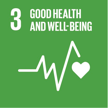About this project
Flood is a destructive, widespread, and frequent natural disaster causing significant damages, and disrupting livelihood throughout Afghanistan. Helmand River Basin (HRB) is highly prone to floods and based on future climate projection and human activities, the impact is predicted to rise substantially. On the other hand, lack of information about flood exacerbates flood risk particularly in the middle reach of Helmand River. Although floods affect almost the whole basin with varying intensity and frequency, this project focuses on the most flood vulnerable part of HRB which supports extensive agriculture, alternatively called Helmand food zone (lies along the bank of Helmand river in Lashkargah and Nawa-e-Barakzai districts). Recently, the frequency and severity of flood risk are rising due to climate change, growing population, and human activities in the floodplain. In March 2019, heavy rains caused Helmand river overflow in Lashkargah and Nawa-e-Barakzai districts and destroyed approximately 350 houses, 1200 people affected, 5 died and 2 children were missing. Moreover, the health of reproductive-age women in the area is greatly affected by floods. Unfortunately, residents in the floodplain are not sufficiently aware of flooding and its consequences due to the inadequate information about flood. Thus, land with a high risk of flooding is carelessly developed for settlement and cultivation purposes. As public awareness is a primary element of risk reduction and one of four priority actions of the Sendai Framework for DRR 2015-2030. The public awareness strengthens self-assistance during flood disasters. some studies asserted that self-assistance becomes most prevalent than other types of assistance during floods. Therefore, this project is designed to launch a public awareness series in the focused area in which the first phase will be implemented in the format of training workshops targeting members of three WUA’s in the area. The total budget of the first phase is within the limit of the current call for proposal financial support.
Goals and Objectives
The objective of the project is basically flood risk reduction in the area along the middle reach of Helmand River with raising awareness of the people regarding flood occurrence, causes, and consequences. By reduction of risk in the area, the safety of the population and food security will be enhanced for the whole province, more importantly, the women’s health issues caused by the flood will be reduced. Through the implementation of the project, the community will be benefited through getting into 4 days of training and information about flood hazards which will help them for better land use planning and avoiding encroachment on the river banks. Following the themes of COP 21 White Paper, the project tries to engage with the first three key areas such as; water and agriculture, water and health, water-related risks. Moreover, based on the themes and recommendations of COP 21, Afghanistan has ratified in the Paris agreement. Two of the seven main goals targeted at “Intended Nationally Determined Contribution” INDC of Afghanistan are; 1) reducing the vulnerability of the country and its population through enhancement of adaptive capacity and resilience, and deployment of disaster risk reduction approaches, 2) promoting economic development and sustainable rural livelihoods. Hence, the current project is directly following the themes and recommendations of COP 21 White Paper and the INDC goals of the Afghan government. In this project, with the implementation of the first phase, the WUA’s will be trained who are influential in the corresponding communities. And by means of them, the project will keep its influence on the behavior of people regarding the flood. Considering the significance and setup of the project it is to be upscaled and replicated more in the future.
Expected result
the project will be a pioneer in Helmand River Basin for flood risk reduction particularly in the target area which is an important part of the basin in terms of population density, agricultural and economic activities. With the implementation of the project, 60 families will be directly and around 200 families will be indirectly benefited from the information provided regarding flood risk in the area. which will lead the residents to proper land use planning and damage reduction. Moreover, by avoiding river cross-section encroachment, the riverine ecosystem will be preserved.
Sustainable Development Goals
About me / organisation
Karimullah Sefat
Sefat (26 years old) is a master student at Nagoya University of Japan with a major in hydraulic engineering. he has been working on a project of flood hazard and damage assessment in Helmand River. Sefat worked for three years as General Manager of Water Rights and Resources in Helmand River Basin (HRB) regional department of Ministry of Energy and Water of Afghanistan. besides that Sefat has published his first research findings entitled "Flood Damage Assessment and Inundation Mapping for Helmand River, Afghanistan". Currently, Sefat is working on the development of a native application to deliver essential information regarding flood in the middle reach of Helmand River. Partners in this project are HRB and WUA's.

